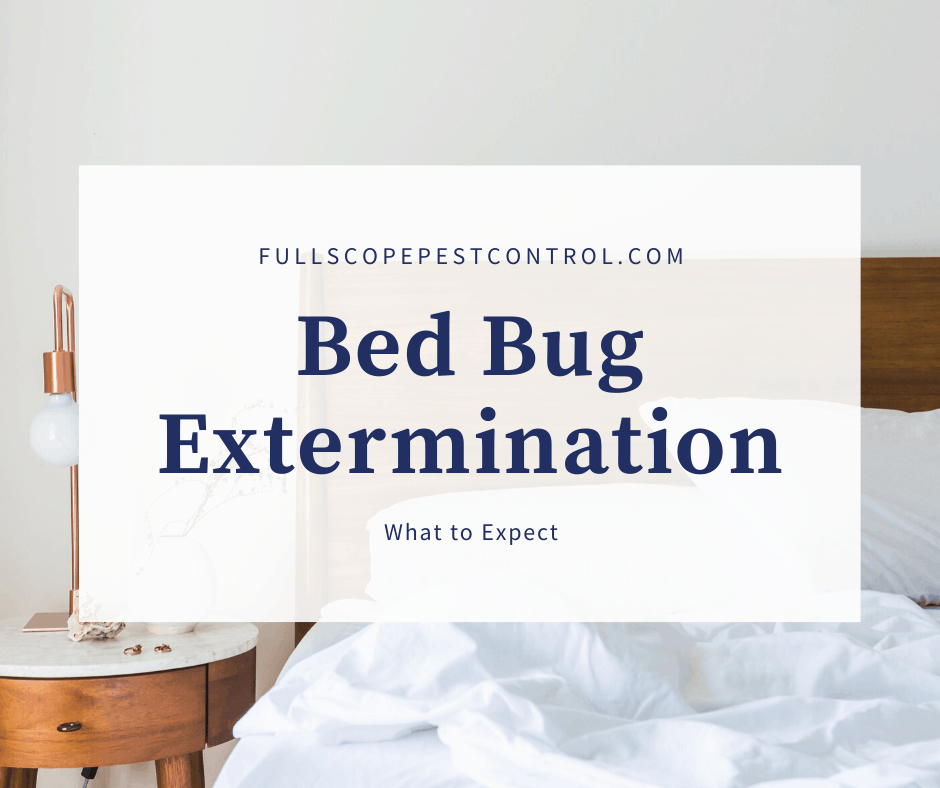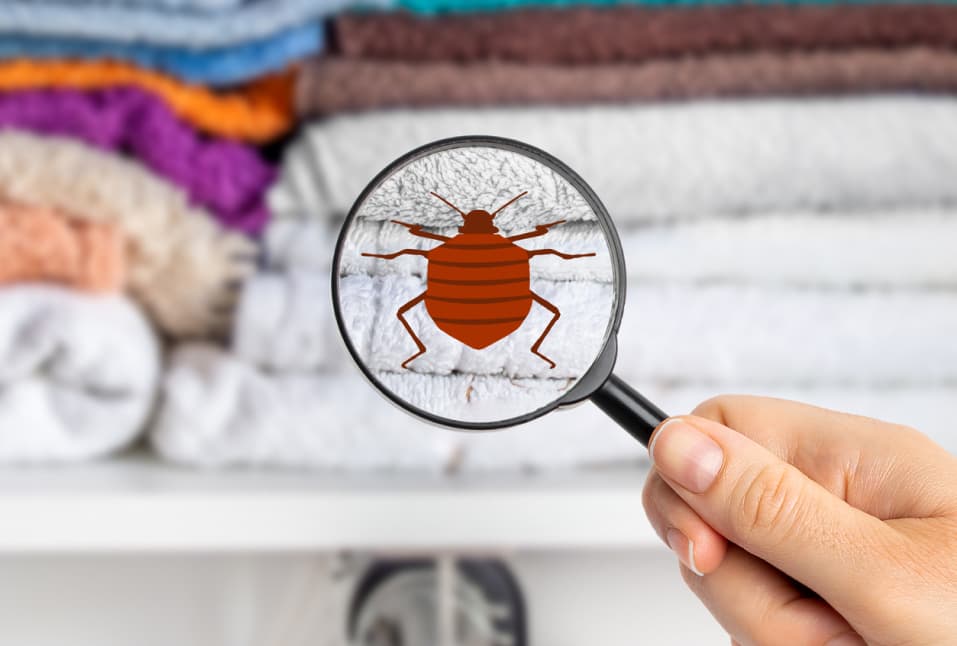Trusted Bed Bug Exterminator for Fast and Safe Elimination
Get Educated About the Kinds Of Pest Control Techniques and Their Advantages for Homeowners
Recognizing the different pest control techniques available to home owners is vital for effective parasite management. Home owners who are educated can make calculated choices that not only address bug issues however also boost the overall high quality of their living environment.
Chemical Bug Control Methods
Chemical insect control approaches are a vital part of integrated bug monitoring techniques for home owners seeking efficient options to pest infestations. These techniques entail the application of chemical materials developed to get rid of or hinder pests that endanger individual home, wellness, and convenience. Common chemicals utilized include pesticides, rodenticides, herbicides, and fungicides, each customized to target specific insects.
The key benefit of chemical parasite control is its rapid performance; many solutions supply instant outcomes, minimizing pest populations significantly quickly. Furthermore, developments in chemical solutions have actually caused items that are a lot more eco-friendly and have lower toxicity levels for non-target microorganisms when used appropriately.

Organic Insect Control Strategies
Natural insect control approaches have actually acquired prestige as homeowners seek much safer and extra sustainable options to standard chemical approaches. Biological bug control strategies utilize natural predators, parasites, or virus to take care of pest populations successfully. This approach is not just eco friendly but likewise lessens the threat of injury to non-target varieties, including useful bugs and wild animals.
Among one of the most usual biological control methods involves introducing natural predators into the atmosphere. Ladybugs can be utilized to manage aphid populaces, while nematodes target soil-dwelling bugs like grubs. In addition, parasitoids-- microorganisms that reside on or within a host-- can be used to regulate details pest species by laying eggs inside them, ultimately leading to their demise.
An additional strategy is using biopesticides, which are acquired from all-natural products such as plants, minerals, or germs (bed bug exterminator). These products can successfully target bugs while presenting very little danger to pets and humans. On the whole, organic bug control methods offer property owners with an efficient methods of parasite monitoring that lines up with environmental principles, advertising a healthier living environment while reducing dependence on synthetic chemicals
Mechanical Parasite Control Techniques
Mechanical bug control strategies encompass a selection of techniques that physically prevent or remove bugs without the usage of chemicals. These strategies are especially useful for homeowners looking for eco-friendly options while making certain the security of their living rooms.
One typical approach is using obstacles, such as internet, displays, and traps, which prevent bugs from entering homes or particular areas. As an example, installing window displays can efficiently maintain pests out, while using physical barriers around yards can deter bigger parasites like rabbits or deer. Furthermore, mechanical catches designed for rodents can capture and eliminate these parasites without the demand for harmful compounds.
One more reliable strategy involves making use of vacuum cleaners and mops to eliminate bugs straight from surface areas. Normal cleaning and maintenance can dramatically reduce insect Find Out More populations by getting rid of food resources and concealing places. Using tools like ultrasonic pest repellents can prevent different bugs via sound waves that are unpleasant to them however faint to people.
Cultural Insect Control Practices
Cultural insect control methods focus on modifying the environment and management techniques to create conditions that are much less helpful to pest problems. These methods are essential in preserving a balanced environment and lowering the dependence on chemical treatments. By changing agricultural practices, homeowners can effectively deter pests while promoting plant health.
One common method includes crop turning, which interferes with the life process of bugs by transforming the kinds of plants expanded in a details location (bed bug exterminator). This not only reduces pest populaces however additionally boosts soil health. In addition, intercropping-- growing diverse plants in closeness-- can puzzle bugs and lower their capacity to locate their recommended host plants
Water monitoring is one more essential element of social methods. Proper watering methods can avoid standing water, which acts as a breeding ground for insects and other bugs. Keeping cleanliness in and around the home, such as consistently removing debris and food waste, can substantially lower bug attraction.
Including these cultural methods right into a thorough pest management technique permits home owners to create an environment that naturally prevents parasites, therefore enhancing the effectiveness of other control techniques while advertising lasting horticulture and landscape design.

Integrated Pest Monitoring Approaches
Integrated Parasite Administration (IPM) represents a holistic approach that incorporates numerous methods to successfully manage pest populaces while lessening environmental impact. This technique incorporates biological, social, physical, and chemical methods to accomplish sustainable parasite control. By examining pest populations and their all-natural opponents, IPM emphasizes surveillance and identifying pests prior to executing control measures.
Among the core concepts of IPM is the usage of thresholds, which develop the level of insect task that calls for intervention. This makes certain that therapies are applied just when needed, reducing the dependence on chemical pesticides. Biological control approaches, such as introducing content all-natural predators or bloodsuckers, job in conjunction with social techniques like crop rotation and environment manipulation to interrupt pest life cycles.
In addition, IPM motivates the usage reference of least-toxic chemical choices when treatment is required, focusing on products that posture minimal threat to non-target organisms and the atmosphere. For home owners, embracing IPM comes close to not only boosts the efficacy of bug administration but likewise advertises a healthier living atmosphere, cultivating biodiversity and decreasing chemical direct exposure. Ultimately, IPM equips homeowners to make educated choices that balance insect control with environmental responsibility.
Verdict
In final thought, understanding the numerous bug control methods encourages property owners to make informed choices concerning pest monitoring. Each method-- chemical, biological, mechanical, social, and incorporated bug management-- uses distinct advantages that cater to various needs and choices.
Recognizing the different parasite control techniques readily available to home owners is essential for reliable pest administration.Chemical pest control techniques are a crucial element of incorporated insect monitoring strategies for house owners looking for effective options to pest problems. In general, organic parasite control techniques supply home owners with an efficient ways of bug monitoring that aligns with environmental concepts, advertising a healthier living atmosphere while minimizing dependence on synthetic chemicals.
Cultural insect control methods concentrate on changing the environment and management techniques to produce problems that are much less helpful to pest infestations.In conclusion, understanding the different bug control techniques equips home owners to make enlightened choices regarding pest management.